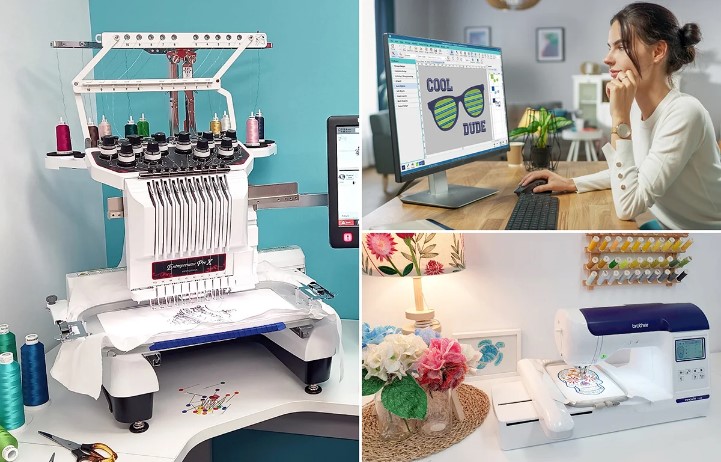When it comes to creating sharp, scalable, and professional designs for embroidery, screen printing, vinyl cutting, or digital use, vector artwork conversion is an absolute must. Unlike raster images, which lose quality when resized, vector files maintain their crisp edges no matter how big or small you make them. That’s why businesses, designers, and crafters rely heavily on accurate vector conversions to bring their logos, illustrations, and creative ideas to life without compromising quality.
In this guide, we’ll explore why vector artwork conversion is so important, the benefits it offers, and how to make sure your files are always ready for flawless production.
Vector artwork conversion is the process of taking a raster file (like JPG, PNG, or BMP) and transforming it into a vector format (such as AI, EPS, or SVG). Raster files are made of pixels, which blur when enlarged. Vectors, on the other hand, are built using mathematical paths, making them scalable without losing sharpness.
This process is crucial for industries that require precision, such as:
- Embroidery digitizing
- Screen printing
- Laser cutting and engraving
- Signage and banners
- Heat transfers and vinyl printing
Whether you’re a small business owner looking to brand merchandise or a designer preparing artwork for production, vector conversion ensures your designs look professional every time.
Here are the top reasons why you should always use vector files for production:
- Scalability without loss of quality – Perfect for logos that need to look sharp on both business cards and billboards.
- File compatibility – Many embroidery and printing machines only accept vector formats.
- Easier editing – Vector files allow quick adjustments in color, shape, or size.
- Faster production setup – Clean vector lines mean fewer adjustments before printing or stitching.
- Professional results – No more pixelation or fuzzy edges in your designs.
Simply put, if you want designs that stand out, vector conversion isn’t optional—it’s essential.
When converting your artwork, you’ll usually end up with one of these vector formats:
- AI (Adobe Illustrator) – The standard vector format for most design professionals.
- EPS (Encapsulated PostScript) – Widely compatible across design and printing software.
- SVG (Scalable Vector Graphics) – Ideal for web and digital use.
- PDF (Portable Document Format) – Often used because it preserves vector properties and is easy to share.
These formats ensure that your artwork can be used in almost any design or production environment.
One of the most popular uses of vector conversion is for embroidery digitizing. A clean vector design makes it much easier to digitize logos or images into stitch files like PES, DST, or JEF. With well-converted vector art, digitizers can create accurate stitch paths, maintain small details, and ensure a smooth final result on fabric.
For example:
- A fuzzy JPG logo may cause misaligned stitches.
- A properly vectorized logo allows the digitizer to create sharp, detailed embroidery files.
This step is key if you want embroidery that looks professional and lasts through repeated washes.
While some software can auto-convert raster files into vectors, the results are rarely perfect. Professional vector artists manually refine each design to ensure accuracy. Here’s why using a service is worth it:
- Clean, smooth lines instead of jagged edges.
- Accurate color separation for printing.
- Recreation of missing details from low-resolution images.
- File optimization for embroidery, printing, and digital use.
- Time-saving for businesses that need quick turnaround.
Instead of struggling with blurry images or spending hours editing, outsourcing vector conversion ensures your designs are production-ready every time.
Vector conversion isn’t just for big businesses—it’s useful for anyone working with design. Some of the people who benefit most include:
- Small business owners – For logos on apparel, signs, and marketing materials.
- Embroidery shops – To prepare customer logos for digitizing.
- Print shops – For screen printing, vinyl, or promotional products.
- Freelance designers – To deliver high-quality artwork to clients.
- Crafters and hobbyists – For personal projects like custom t-shirts or tote bags.
If you want your artwork to look as good in real life as it does on your screen, vector files are the way to go.
To get the best results from your vector artwork conversion, keep these tips in mind:
- Start with the highest-quality image possible – The clearer your source image, the better the final vector.
- Work with professionals – Manual vector conversion is more accurate than auto-tracing software.
- Communicate your needs – Let the service provider know whether the artwork is for embroidery, printing, or another purpose.
- Check compatibility – Make sure you receive your file in a format that works with your equipment.
- Request edits if needed – A good provider will refine the artwork until it meets your expectations.
When dealing with vector conversion, watch out for these pitfalls:
- Relying only on auto-conversion tools (often produces poor results).
- Ignoring small details that may not translate well into vector.
- Forgetting to adjust colors for embroidery or printing needs.
- Using the wrong stabilizer or digitizing settings with embroidery (vector helps, but digitizing still matters).
Avoiding these mistakes will save you time, money, and frustration in the long run.
Professional vector artwork conversion is the foundation of high-quality embroidery, printing, and digital designs. It ensures your logos and creative ideas stay sharp, editable, and production-ready across all mediums. Whether you’re working on business branding, embroidery projects, or promotional items, having your artwork properly converted to vector is the key to professional results.
And when it comes to accuracy, speed, and reliability, Absolute Digitizer is a trusted choice for businesses, designers, and crafters who want flawless vector conversion and embroidery digitizing services.

